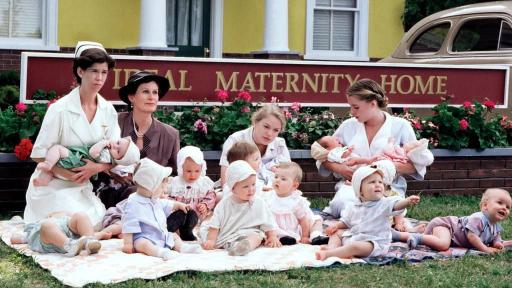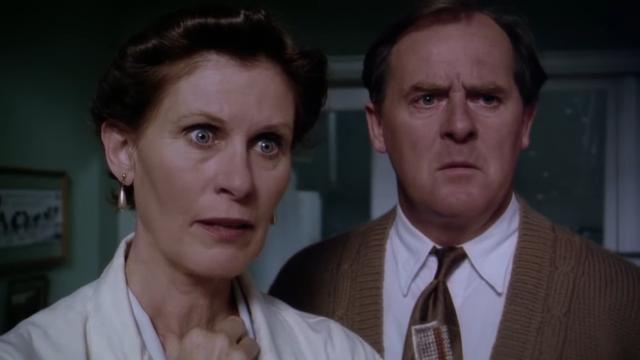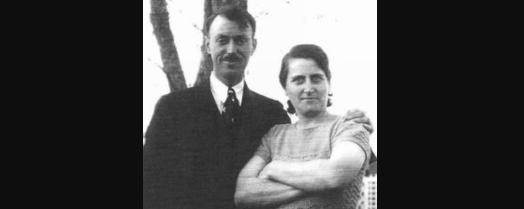“Butterbox Babies,” which was directed by Don McBrearty, chronicles the 1930s adoption ring that William Peach Young and his wife Lila Gladys Young operated in Nova Scotia, Canada. Unmarried expectant mothers who give birth there find refuge in Their Ideal Maternity Home. But what’s below might readily be described as sinister: while the unhealthy newborns are left to starve to death and are then buried in butter boxes, the healthy babies are sold to couples without children through illegal adoption. Together with Catherine Fitch, Nicholas Campbell, Michael Riley, Cedric Smith, and Corinne Conley, Peter MacNeill and Susan Clark give incredibly captivating performances that bring the story to life.
The 1995 drama film, which won two Gemini Awards, is set at a period between the Great Depression and World War II, two of the worst periods in human history. One might ask if this is one of the microcosmic reasons the Youngs choose to act in the way that they are because both of these had an impact on the global economy. Put differently, generate revenue during a time when scarcity is a global issue. A spectator may choose to ignore the happenings in favour of learning more about the pair and their mindset, curious about what goes through such people’s brains.
Butterbox Babies is an Adaptation of a Novel Based on True Events
It is based on Bette L. Cahill’s book of the same name and is directed by Raymond Storey. The Ideal Maternity Home in East Chester, Nova Scotia, which was in operation from 1928 until 1947, is the subject of the book, which is based on actual events. William Peach Young and Lila Gladys Young (née Coolen), who had been together since the mid-1920s, were the facility’s managers. The former was a licenced chiropractor and an unordained preacher of the Seventh-day Adventist Church; the later was a midwife herself.
In addition to providing maternity care to single moms and married couples, it also provided adoption and abortion services, which were prohibited at the time. There were costs associated with everything at Ideal Maternity Care, from diapers to the funerals of newborns who passed away. The mother was required to pay the Youngs hundreds of dollars for the child’s lifetime care in the event that she was unable to care for her child. They were forced to labour at the Youngs’ house when they couldn’t afford the money. According to a Canadian Children’s Rights Council investigation, women were employed there for up to eighteen months in order to pay off their debts. Following this, the infant was offered for adoption as a component of a Canadian illicit trade.
Reports state that American couples were also sold infants. The Youngs exploited the prohibition on adoptions between people of different religious backgrounds in the US and sold the newborns for as much as $10,000. In order to ensure that the babies would starve to death, the Youngs purposefully fed them nothing except water and molasses. The babies that the couple deemed to be “unmarketable” also met this fate. Any health problems or newborns who weren’t Caucasian in ethnicity were warning signs. The infants that died were placed in little boxes, which were then used to store dairy products (hence the term “Butterbox Babies”). The boxes were then either buried beneath the grounds of the property, tossed into the sea, or burned in a furnace.
In the past, the pair would also lie to the baby’s parents about its death in order to sell the child to another couple that was looking for a child and was willing to pay for adoption. At the Ideal Maternity Home, 400–600 newborns are thought to have died. One thousand more were taken in. Following a 12-year conflict (1934–1946), Dr. Frank Davis, who was the minister of public welfare at the time, and his staff accumulated a tonne of evidence and brought numerous allegations of fraud and homicide; however, either the Youngs were found not guilty or there was insufficient proof. In the end, the Youngs were found guilty of selling kids to four American couples unlawfully, and they were also fined $428.90.
Ideal Maternity Home was shut down by formal government decree in 1946, and it had ceased operations by 1947. Lila fell away from leukaemia in 1967, while William passed away in 1964. In a way that feels like a perfect duplicate of what actually transpired at the time, “Butterbox Babies” skillfully depicts the benefits and manipulation of emotions on the one hand, and the shortcomings of the welfare system on the other.



